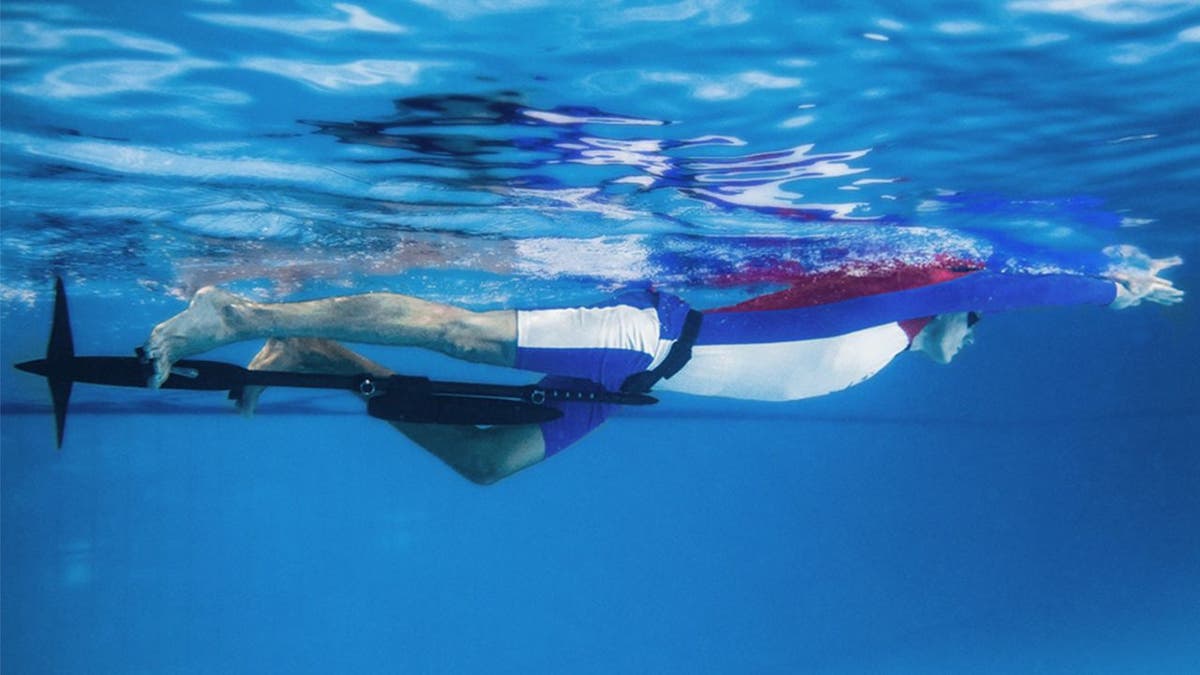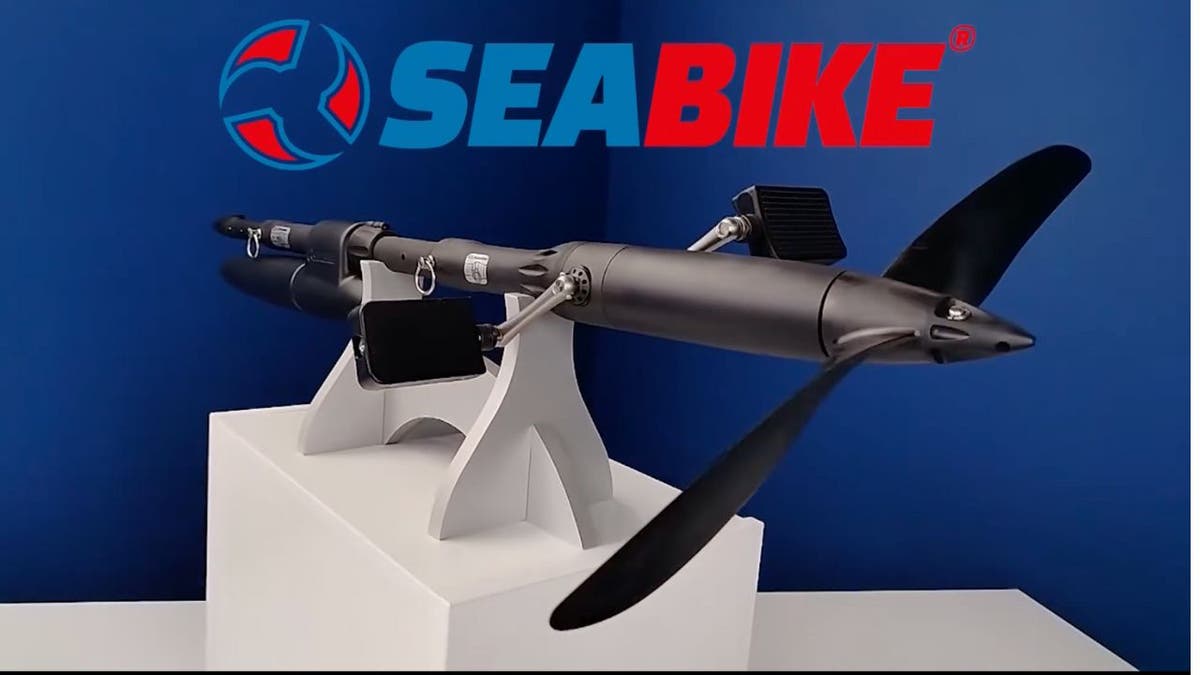Today, one day after Microsoft announced that it would shut down four of its games studios, Matt Booty, head of Xbox Game Studios, held a town hall to discuss the division’s future goals. “We need smaller games that give us prestige and awards,” Booty told employees, according to internal remarks shared with The Verge.
Technology
Microsoft says it needs games like Hi-Fi Rush the day after killing its studio
/cdn.vox-cdn.com/uploads/chorus_asset/file/24416409/the_making_of_hi_fi_rush_7.jpeg)
For some listeners on the call, it was a surprising goal: Microsoft had just shut down the Japanese developer Tango Gameworks, which was coming off the small, prestigious hit title Hi-Fi Rush.
Hi-Fi Rush, which was a surprise release last year, was praised for its innovation and charm. The rhythm action game featured music by The Black Keys and Nine Inch Nails, with an art style that evoked the hyper-stylized games of the PS2 era. Just four months after its release, Hi-Fi Rush hit 3 million players. During the 2023–2024 awards season, the game went on to win a Game Award, a Game Developers Choice award, and a BAFTA.
While Microsoft hasn’t shared sales data, it was apparently happy with the game. When rumors swirled that it wasn’t doing well commercially, Aaron Greenberg, vice president of Xbox games marketing, wrote on X that Hi-Fi Rush “was a break out hit for us and our players in all key measurements and expectations.”
By all accounts, including Microsoft’s own, Tango Gameworks made a hit and something wholly unlike anything it’s made before. Before Hi-Fi Rush, Tango Gameworks was known exclusively for its survival horror games, including The Evil Within series and Ghostwire: Tokyo. In an interview with Kinda Funny Games, Xbox head Phil Spencer spoke about how important it was for Xbox to allow studios to make games outside their comfort zones.
“I want to give the teams the creative platform to go and push their ability, push their aspirations,” Spencer said.
Hi-Fi Rush also represented Microsoft’s commitment to bringing Japanese exclusives to the console. In an interview with Game Watch, a Japanese video game media outlet, Spencer praised Hi-Fi Rush for its “high quality” and said that players could “expect” to see more AAA titles from Japan, evoking the days when Lost Odyssey and Blue Dragon were both exclusives on the Xbox 360. “While there are titles we can’t announce yet,” Spencer said in the September 2023 interview, translated by VGC, “we are currently developing new games in collaboration with Japanese companies.” It’s worth wondering if that’s still the plan now that Tango is shut down.
Right now, small single-player games like Hi-Fi Rush are having a huge moment. Balatro, a poker roguelike made by a single developer, sold over 1 million copies in its first month. Manor Lords, another solo-dev project in early access on Steam, has also sold over 1 million copies. Hades 2 just released in early access and doubled its predecessor’s all-time peak player count on Steam in a single day. Even the original Hades is climbing back up the Steam charts, breaking its all-time peak player count record just today almost four years after its initial release.
While we don’t know exactly what sales goals Microsoft had for Hi-Fi Rush, clearly there is a demonstrated appetite for this kind of game, with Tango Gameworks positioned perfectly to deliver it. In fact, according to a report from Bloomberg, Tango Gameworks was in the process of pitching a sequel to Hi-Fi Rush before it got shut down.
With Hi-Fi Rush, Tango Gameworks gave Microsoft just what Booty says he wants: a small, creatively unique, highly praised, award-winning game. Booty’s comments, then, suggest that Xbox’s leaders couldn’t recognize what they had on their hands — or simply didn’t know how to take advantage of the success they were seeking out.
We reached out to Microsoft for comment.

Technology
Acer now has a 3D camera for its glasses-free 3D laptops
/cdn.vox-cdn.com/uploads/chorus_asset/file/25472105/Acer_SpatialLabs_Eyes_PCs_and_Displays.jpeg)
Acer isn’t a brand that you’d typically associate with photography, but its new camera offering comes with an interesting twist — the ability to snap pictures and video in stereoscopic 3D. Announced ahead of next week’s Computex event, the SpatialLabs Eyes Stereo Camera also allows users to livestream 3D content to YouTube, and make 3D video calls on Zoom, Teams, and Google Meet.
Acer says the SpatialLabs Eyes Stereo Camera will be available in Q3 this year starting at $549. It fully integrates with Acer’s lineup of SpatialLabs 3D devices — such as the Aspire 3D 15 SpatialLabs Edition laptop — which have wowed us with their impressive ability to display glasses-free 3D content. Images and video recorded on the SpatialLabs camera can also be viewed on other 3D-capable displays, 3D projectors, VR headsets, or on the camera itself.
Support for 3D livestreaming and conference calls is a niche feature, but it’s nice to see Acer expanding its SpatialLabs 3D tech. The 3D experience Acer provides really needs to be experienced firsthand to understand how visually mind blowing it is to see things reaching out at you without the assistance of glasses. It’s far superior (and more pleasant to view) than older glasses-free 3D offerings like Nintendo’s 3DS handheld, and the SpatialLabs camera makes filming such content more accessible to those without expansive videography knowledge.
The SpatialLabs camera is compact, weighing 220 grams (0.4 pounds) and measuring in at 4 x 2.5 x 0.9 inches. It has a resolution of 8 megapixels per eye, a built-in “selfie mirror,” and a smattering of familiar photography features — like Electronic Image Stabilization (EIS) and the ability to manually adjust ISO, white balance, and shutter speed settings. The camera also has a 1500mAh battery capacity, a microSD card slot to expand storage, and a 2.4-inch touchscreen contained in a “weatherproof” casing.
Livestreaming to YouTube will require the latest version of Acer’s SpatialLabs Player, while 3D video conferencing support — which also comes with “customizable depth features” — will be enabled via the incoming SpatialLabs video call widget which is also launching sometime in Q3.
Technology
Ready for some serious pedal power to help you swim way faster

For those who have always wanted to slice through the water with increased speed but felt held back by their natural swimming abilities, Seabike offers a solution.
This French innovation amplifies your leg power, turning each stroke into a powerful surge forward.
The Seabike is akin to granting your feet the power of fins but with the comfort and ease of riding a bike.
GET SECURITY ALERTS, EXPERT TIPS — SIGN UP FOR KURT’S NEWSLETTER — THE CYBERGUY REPORT HERE
A man holding a Seabike. (Seabike)
What is Seabike?
Seabike is a crank-driven pusher prop that resembles an underwater unicycle. It’s designed to harness your leg power to propel you through the water at speeds that would make even Aquaman envious. The device is simple to use. Extend the pole, strap it to your waist, find the pedals and start cranking. Before you know it, you’ll be cruising through the water with ease and agility.

A Seabike next to a woman on a boat. (Seabike)
How does Seabike work?
The Seabike operates on a mechanical drive system with a 15-inch propeller that turns your leg movements into forward momentum. It’s compatible with scuba gear, allowing for deep-sea exploration without the fatigue. And for those who prefer arm power, the Seabike can be flipped and operated with handles in place of pedals.

Woman holding a Seabike. (Seabike)
HOW TO GET RID OF ROBOCALLS WITH APPS AND DATA REMOVAL SERVICES
Where can you use Seabike?
Whether it’s the local pool or the open sea, the Seabike is versatile. It’s buoyant, so there’s no fear of losing it underwater, and it’s gentle enough to be pool-friendly yet robust for ocean adventures. Seabike even offers snorkeling tours in Cannes, complete with snorkel boards and spearfishing kits.

A man using Seabike in a pool. (Seabike)
BEST WEARABLE CUTTING EDGE TECH
Accessibility and maintenance of Seabike
Seabike prides itself on being user-friendly. Most people can learn to use the BASE model in just 5–10 minutes, and kids often pick it up even faster. Maintenance is a breeze. A simple freshwater rinse after saltwater use is all it takes.

A woman using Seabike. (Seabike)
DIVE INTO THE SEA WITH THIS STATE-OF-THE-ART UNDERWATER DRONE
Dive into high-speed aquatic fun without breaking the bank
With a starting price of around $316, it’s an accessible piece of equipment for anyone looking to add a splash of excitement to their aquatic activities. Plus, Seabike ships worldwide.

Seabike on a stand. (Seabike)
WHAT IS ARTIFICIAL INTELLIGENCE (AI)?
Kurt’s key takeaways
In a world leaning towards electric, the mechanical simplicity of Seabike is a breath of fresh air. It’s a testament to human ingenuity and a call to embrace the wonders of the water in a whole new way. So, strap on a Seabike and swim faster than you ever thought possible.
How do you think Seabike could enhance or change your water activities and exploration? Let us know by writing us at Cyberguy.com/Contact
For more of my tech tips & security alerts, subscribe to my free CyberGuy Report Newsletter by heading to Cyberguy.com/Newsletter
Ask Kurt a question or let us know what stories you’d like us to cover.
Follow Kurt on his social channels:
Answers to the most-asked CyberGuy questions:
Copyright 2024 CyberGuy.com. All rights reserved.
Technology
TikTok is reportedly splitting its source code to create a US-only algorithm
/cdn.vox-cdn.com/uploads/chorus_asset/file/25406821/STK051_TIKTOK2_CVirginia_A.jpg)
A report from Reuters says that work has been ongoing since last year to create a version of TikTok’s recommendation algorithm that operates independently from Douyin, the Chinese version of the app operated by its parent company ByteDance. According to the unnamed sources, completing the project could take more than a year as part of a plan to show lawmakers that the US business is independent of its owner in Beijing.
The report says executives have talked about the project in all-hands meetings and on the company’s internal messaging system, Lark. The sources also said that splitting the source code would cut TikTok off from the “massive engineering development power” of its parent company.
TikTok responded by tweeting, “The Reuters story published today is misleading and factually inaccurate.”
In emails to The Verge, TikTok spokesperson Michael Hughes said, “While we have continued work in good faith to further safeguard the authenticity of the TikTok experience, it is simply false to suggest that this work would facilitate divestiture or that divestiture is even a possibility,” and when asked if the code is being split, responded that is “100 percent false.”
TikTok has tried to convince lawmakers of its US independence before, with the “Project Texas” data silo that it described as “an unprecedented initiative dedicated to making every American on TikTok feel safe, with confidence that their data is secure and the platform is free from outside influence.” However, Alex Heath visited a Transparency and Accountability Center last year and, amid the project’s transparency theater, found a company that “seems to have realized that it won’t save itself from a US ban on the technical merits.”
TikTok is already suing the US government over the law that gives its parent until January 19th, 2025, to pass control of the app to someone else or face a ban. According to Reuters unnamed sources, there’s no plan to separate the companies; however, “once the code is split, it could lay the groundwork for a divestiture of the U.S. assets.”
-

 News1 week ago
News1 week agoThe states where abortion is on the ballot in November : Consider This from NPR
-

 News1 week ago
News1 week agoRead Prosecutors’ Filing on Mar-a-Lago Evidence in Trump Documents Case
-

 Politics1 week ago
Politics1 week agoMichael Cohen swore he had nothing derogatory on Trump, his ex-lawyer says – another lie – as testimony ends
-

 World1 week ago
World1 week agoSerbian parliamentary minnow pushes for 'Russian law' equivalent
-
Technology1 week ago
Microsoft’s new Windows Copilot Runtime aims to win over AI developers
-

 World1 week ago
World1 week agoWho is Ali Bagheri Kani, Iran’s acting foreign minister?
-

 Politics1 week ago
Politics1 week agoAnti-Israel agitators interrupt Blinken Senate testimony, hauled out by Capitol police
-

 News1 week ago
News1 week agoBuy-now, pay-later returns and disputes are about to get federal oversight















/cdn.vox-cdn.com/uploads/chorus_asset/file/25458338/DSC00620.JPG)